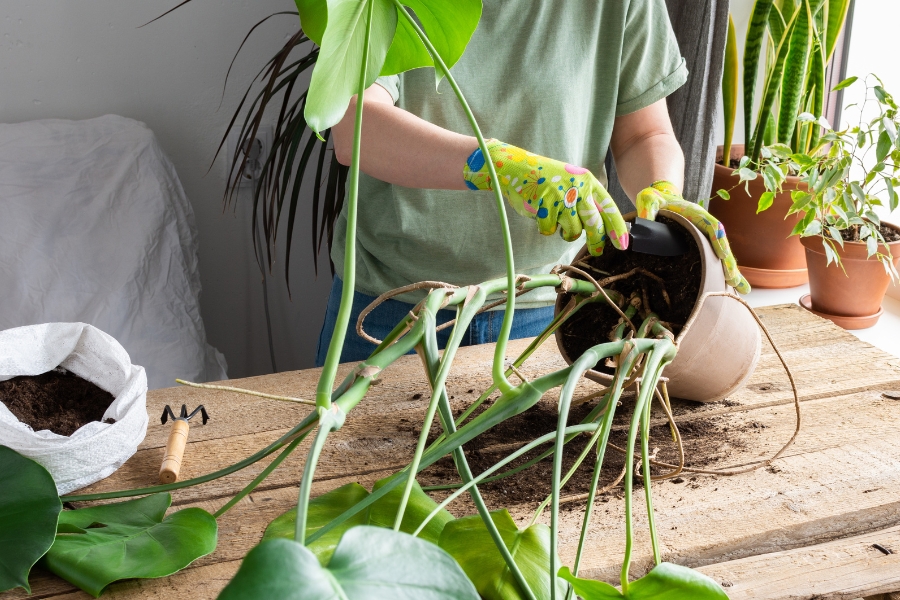Choosing the right soil for your plants is a decisive factor in determining their health and growth rate. It is even more critical when dealing with monstera plants, which require unique care and attention to thrive. The best soil for monstera plants is a blend that nurtures their individual needs, providing ample nutrition, water retention, and proper aeration for root health.
Table of Contents
Understanding these needs can be a complex task, especially for beginners in gardening. It’s not merely about picking up a bag of soil from the local nursery or online store. You need to comprehend the composition of different soils, their characteristics, and how they can influence your plant’s growth. This article serves as your comprehensive guide, helping you make an informed decision when choosing the soil for your monstera plants.
Bear in mind that not all monstera plants have the same requirements. Some may prefer a soil mix that drains quickly, others may need a more moisture-retaining medium, and some might thrive in a particular pH range. Your ultimate aim should be to create an environment that closely mimics the plant’s natural habitat.
In the sections that follow, we will dissect the science of soil, delve into the specific needs of different types of monstera plants, and offer recommendations on how you can create the perfect blend of soil for your green friends. Read on to unearth the secrets of effective gardening and learn the art of cultivating monstera plants like a pro.
Monstera Soil Mix
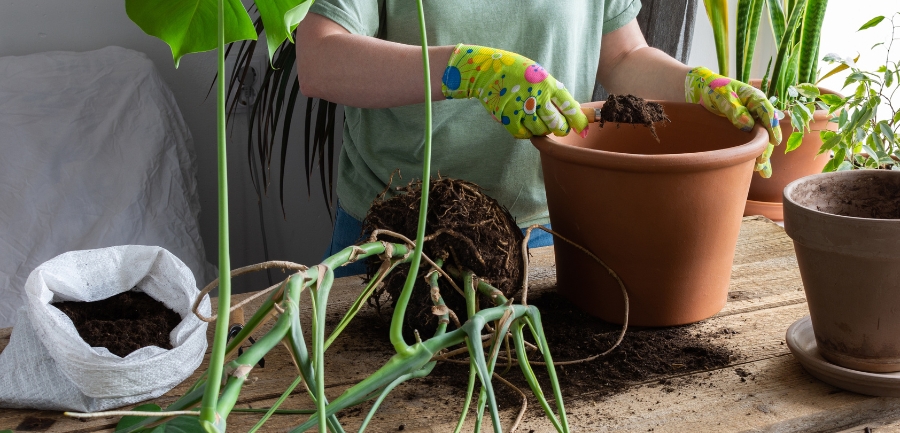
Understanding the best soil mix for monster plants begins with knowing their natural habitat. Monsteras, hailing from tropical rainforests, are accustomed to well-draining soil that’s rich in organic matter. A well-constructed Monstera soil mix should take these preferences into account.
Soil for Monstera
As a foundation, start with high-quality indoor plant potting soil. In order to avoid the roots from being waterlogged and to ensure they have access to the moisture they require, this strikes a balance between drainage and water retention.
Next, add perlite or pumice to the mix. These inorganic substances aid in soil aeration, allowing the roots to breathe and grow without obstruction. Typically, a ratio of one part perlite to two parts potting soil works well for Monsteras.
Lastly, include some peat moss or coco coir for their excellent water retention capabilities. They also help in maintaining a slightly acidic pH level, preferred by most Monsteras.
Monstera Deliciosa Soil

Monstera Deliciosa, arguably the most popular variety of Monsteras, has slightly more specific soil needs. These plants prefer loose, well-draining soil, which can be achieved by adding a greater quantity of perlite or pumice to the mix.
In addition to this, you might want to consider adding organic matter like compost or worm castings. This not only provides essential nutrients but also encourages beneficial microbial activity, promoting healthier root systems.
Adjusting the pH level of the soil mix to be slightly acidic, between 5.5 and 7.0, is also beneficial for Monstera Deliciosa. You can measure the pH of your soil using a soil pH meter, which is readily available in garden centers or online.
In conclusion, the key to creating the perfect Monstera soil mix lies in understanding your plant’s needs and mimicking its natural habitat as closely as possible. With the right blend of ingredients, you can provide the perfect home for your Monstera, ensuring its long-term health and growth.
Monstera Fertilizer
Apart from the right soil mix, Monsteras also require a robust feeding regime to meet their nutritional needs. A quality fertilizer plays an essential role in ensuring your Monstera receives all the necessary nutrients for healthy growth and development.
Monsteras generally prefer a balanced, water-soluble fertilizer. Look for a formulation that provides equal amounts of Nitrogen (N), Phosphorus (P), and Potassium (K) – often referred to as NPK. Nitrogen promotes healthy foliage, Phosphorus aids in root and flower development, and Potassium contributes to overall plant health and disease resistance.
A slow-release granular fertilizer is another excellent option. It continuously feeds the plants over several months, reducing the frequency of fertilization. Remember, over-fertilization can harm your Monstera, leading to burnt foliage or stunted growth.
Fertilization should ideally take place during the growing season, which for most Monsteras is from spring through summer. Reduce or completely halt fertilization during the colder months as the plant enters its dormant phase.
Maintaining a regular fertilization schedule tailored to your Monstera’s needs can significantly enhance its growth and overall health. Paying attention to these details will ensure your Monstera thrives, rewarding you with its signature lush, green foliage.
How Often to Water Monstera

A crucial part of caring for your Monstera involves understanding its watering needs. The right watering routine can significantly influence the plant’s health and longevity.
Monsteras originate from tropical regions where rainfall is plentiful, but they’re also adapted to periods of drought. This means that while they enjoy moisture, overwatering can lead to problems like root rot.
As a general rule of thumb, it’s best to water your Monstera when the top 1-2 inches of soil are dry. This usually translates into watering once a week during the growing season (spring and summer) and reducing watering frequency during the colder months (fall and winter).
Remember, your Monstera’s watering needs can vary depending on factors like the size of the plant, the pot size, the environment’s humidity levels, and the temperature. For instance, Monsteras in warmer, drier climates may need watering more frequently than those in cooler, humid regions.
It’s also crucial to ensure that your pot has adequate drainage to prevent water from accumulating at the bottom, as this can cause root rot.
In essence, understanding your Monstera’s watering needs and adjusting your routine to accommodate these requirements is key to fostering a healthy, thriving plant.
Monstera Light Needs
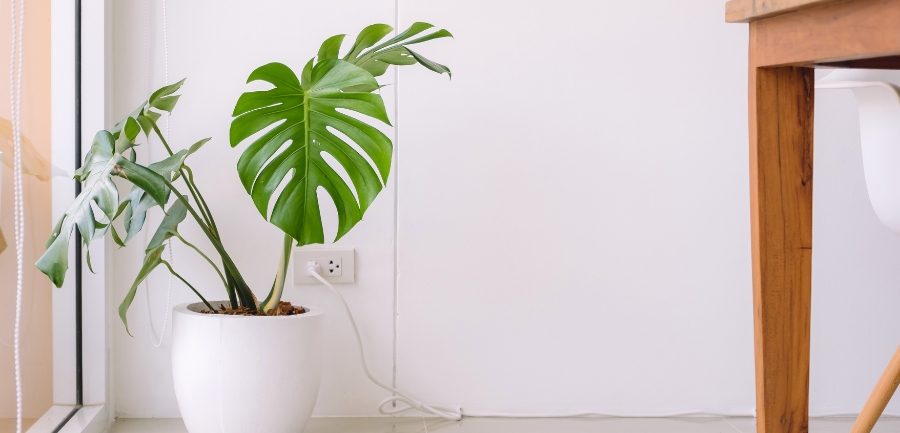
IMonsteras, while being relatively flexible, do have particular lighting requirements for optimal growth.
Large Monstera Plant
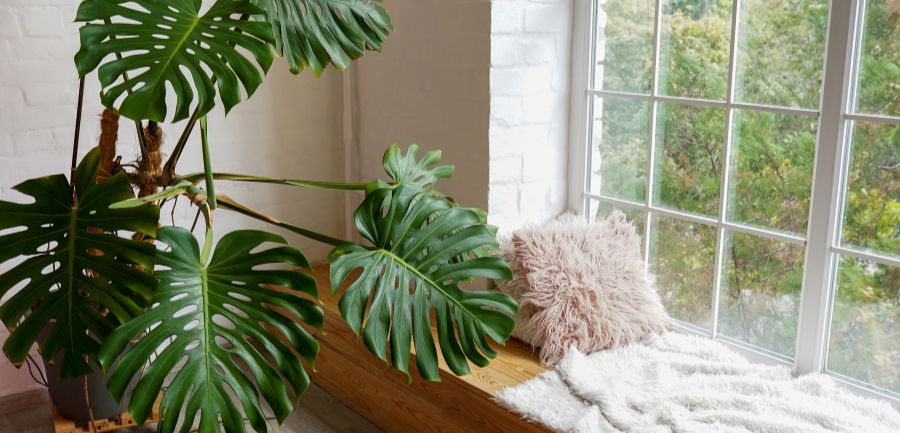
Larger Monsteras, with their lush and sprawling foliage, require plenty of indirect, bright light. Direct sunlight can burn the leaves, causing them to yellow or develop brown spots. A north or east-facing window is ideal, providing bright but diffused light. If you notice your large Monstera stretching towards the light or the leaves losing their characteristic splits, it might not be receiving enough light.
Brown Spots on Monstera
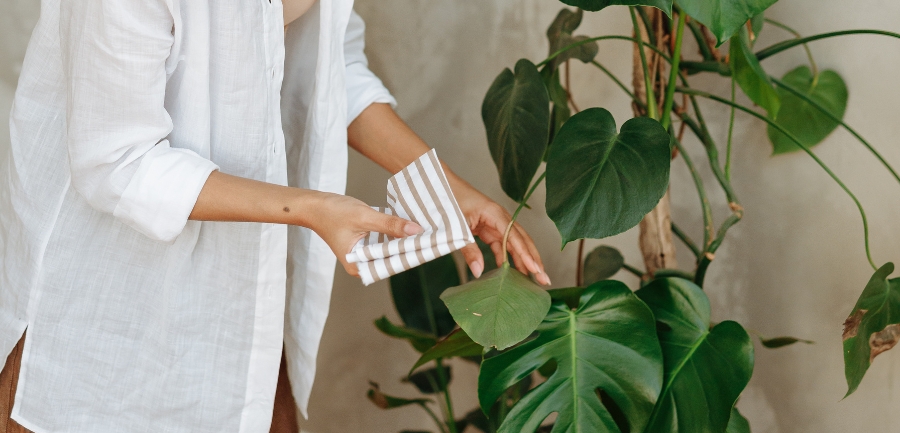
Brown patches on Monstera leaves are typically an indication of sunburn or overwatering. If your plant is in direct sunlight and has dry, crispy brown areas, it probably also has sunburn. Move your Monstera to an area with direct light that is bright to fix this. If the soil is moist and the brown spots are mushy, you may be overwatering your plant, which needs to be stopped right once.
In conclusion, correct lighting conditions play a crucial role in maintaining a healthy Monstera. Carefully monitor your plant for any signs of distress and adjust its environment as needed.
Monstera vs Philodendron
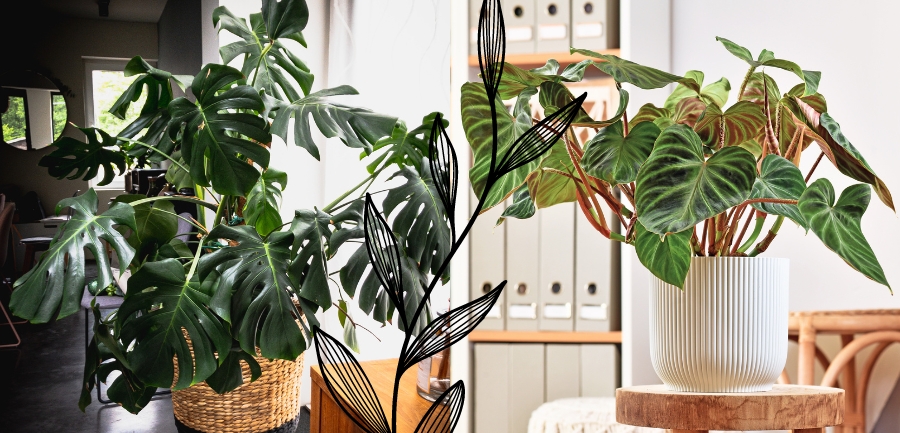
Monsteras and Philodendrons are both popular choices among houseplant enthusiasts, due to their lush foliage and relatively easy care routines. However, they’re distinct in several ways, and it’s important to understand these differences when choosing the right plant for your space.
In terms of appearance, Monsteras are well-known for their large, fenestrated leaves, which develop characteristic splits as they mature. On the other hand, Philodendrons exhibit a wide variety of leaf shapes and sizes, depending on the species, but they generally lack the signature splits of Monsteras.
When it comes to care, both plants thrive in well-draining soil and require a balance of light and shade. However, Monsteras can tolerate slightly drier conditions than Philodendrons, which prefer consistently moist (but not waterlogged) soil.
While both plants benefit from climbing support to mimic their natural growth habits, certain Philodendron species can also adapt to trailing or hanging growth patterns, offering a unique aesthetic appeal.
In terms of propagation, both can be propagated through stem cuttings, although Philodendrons are often easier and quicker to root.
In essence, both Monsteras and Philodendrons make wonderful indoor plants. The choice between them depends on your personal preference, the conditions in your home, and the amount of care you’re willing to provide.
FAQs
What is the best soil mix for Monstera?
The best soil mix for Monstera includes good quality indoor plant potting soil, mixed with perlite or pumice for aeration, and peat moss or coco coir for water retention.
Can I use cactus soil for Monstera?
While you can use cactus soil for Monstera, it may not provide enough water retention. It’s best to mix it with some peat moss or coco coir for optimal growth.
What is the best soil for variegated Monstera?
The best soil for variegated Monstera is a well-draining mix, rich in organic matter. Incorporate perlite or pumice for aeration and peat moss or coco coir for moisture retention.
Can I plant my Monstera in soil?
You may bury your Monstera in soil, yes. Make sure the soil mixture has appropriate aeration, good drainage, and moisture retention to meet the needs of the plant.
To Wrap It Up!
In the journey of growing your Monstera, remember that each plant is unique, and the care routine should be adapted to its individual needs. The joy of plant parenting is not just about watching your plant grow, but also understanding and catering to its requirements.
With Monsteras, small changes in their care routine can lead to significant differences in their growth and overall health. From adjusting the soil mix to tweaking light conditions, every decision you make will contribute to the health and vitality of your Monstera.
Importantly, be patient. Gardening is a process of continuous learning and adjustment. It takes time to find the perfect balance of care for your Monstera. You will face challenges, but with each hurdle, you gain valuable knowledge about your plant’s needs. In the end, seeing your Monstera thrive will provide a sense of fulfillment that only plant enthusiasts truly understand. Happy gardening!

